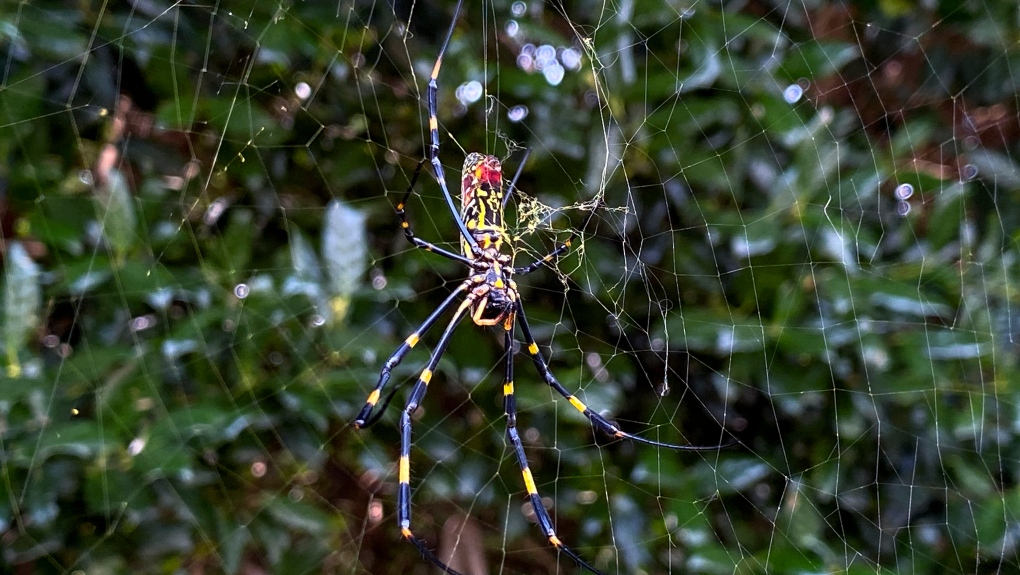
Meet the joro, a flying spider scientists say could someday spread to Canada
CTV
Recent research suggests that an invasive species of large, colourful spiders that take to the air as babies could spread to Canada.
It's a deeply human experience to recoil from spiders. Imposing, syringe-thin legs, menacing fangs, the implied threat of a deadly or paralytic venom percolating within their cephalothoraxes, waiting to be unleashed. Egg sacs, cobwebs and exsanguinated husks -- all that they leave behind.
Helpful as they may be for controlling household pests, arachnids are just plain frightening to most. But at least they don't fly, right?
Right?
Recent research suggests that an invasive species of large, colourful spiders that take to the air as babies could spread to Canada.
Here's what to know about joro spiders, the surprisingly timid, paratrooping predators that may creep and crawl north in the coming years, but for which doubts remain on when that might be, and just what impact they could actually bring.
Known to scientists as trichonephila clavata, the joro, or "parachute" spider, is a species native to eastern Asia, but that has been observed cropping up in the southeastern United States for the past decade. Environmental research has found that the creatures could comfortably live much further north, though, with the potential to inhabit the Great Lakes, St. Lawrence and even Rocky Mountain regions -- at least, in theory.
Capable of growing up to 10 centimetres or more in length, with intricate patterns of black, blue, magenta and lemonade-yellow on its carapace, the joro makes for an intimidating image, but it's during infancy that they display their most headline-grabbing behaviour.
